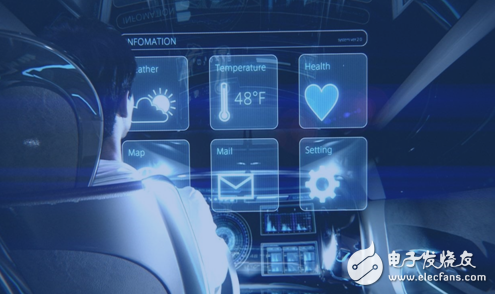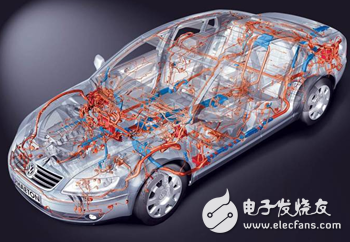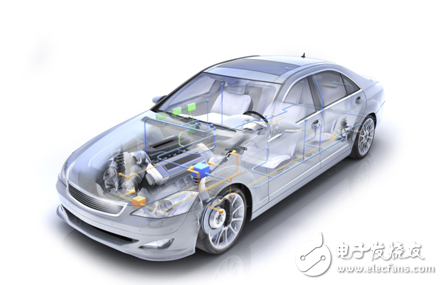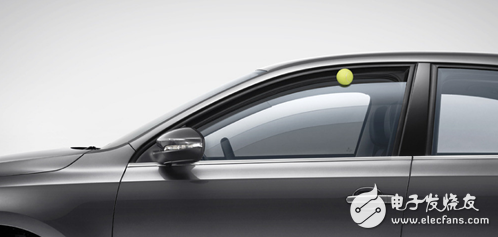As new energy vehicles are listed in the seven strategic emerging industries that the country has accelerated cultivation and development, the intelligentization, digital networking and energy-saving of automobiles have become the general direction of automobile development. The car bus is the basis for digital network. This article will talk to you about the three major buses of today's cars, CAN, LIN, Flexray.
Today, society has entered the era of information networks. People hope that cars are not just a means of transportation. They also hope that cars are an extension of life and work. In cars, they can stay in their own offices and homes. Telephone, Internet, entertainment, work.

The increase in functionality has also led to a dramatic increase in the number of electronic devices on the car, and various car buses have emerged. The car bus we are most familiar with is CAN, which may be strange to LIN and Flexray. Then, let's introduce you to these three kinds of car buses.
First, the birth of the car bus
The birth of the car bus is inseparable from the development of automotive electronics. The degree of automotive electronics is also seen as an important indicator of the level of modern cars. Most of the traditional automotive electronics use a single point-to-point communication method, which has little connection with each other, which will inevitably form a huge wiring system. According to statistics, in a high-end car using traditional wiring methods, the length of the wire can reach 2000 meters, the number of electrical nodes can reach 1500, and the number will be doubled every 10 years.

This further exacerbates the contradiction between the thick wire harness and the limited available space on the car. Regardless of material cost or work efficiency, traditional wiring methods cannot adapt to the development of modern automobiles. In addition, in order to meet the real-time requirements of each electronic system, public data (such as engine speed, wheel speed, throttle pedal position, etc.) must be shared, and the requirements for real-time performance of each control unit are different. Therefore, the traditional electrical network has been unable to adapt to the development of modern automotive electronic systems, so the new automotive bus technology came into being.

Second, CAN bus
The CAN bus, also known as the car bus, is called "Controller Area Network" and is a serial communication network that can effectively support distributed control and real-time control. It connects the individual control units in some form (mostly star) to form a complete system.
The CAN bus was originally developed as a serial communication protocol by Bosch in Germany to solve the data exchange between many electronic control modules (ECUs) in modern automobiles. Nowadays, it has been widely used in automotive electronic systems, becoming the main industry standard of the European automotive industry, representing the mainstream development trend of automotive electronic control networks.

Many famous automobile manufacturers in the world, such as Volkswagen, Benz, BMW, Porsche, Rolls. Companies such as Royce have used the CAN bus to implement data communication for automotive interior control systems.
Third, LIN bus
LIN is a new low-cost open serial communication protocol jointly launched by famous companies such as Motorola and Audi. It is mainly used in distributed electronic control systems in vehicles, especially for smart sensors or actuators. Digital communication occasions. Mainly used in electric doors and windows, seat adjustment, lighting and other controls.
A typical LIN network can have up to 12 nodes. Taking door and window control as an example, there are door locks, window glass switches, window lift motors, operation buttons, etc. on the door, and only one LIN network can be connected. Through the CAN gateway, the LIN network can also exchange information with other systems of the car to achieve richer functions. LIN has become an international standard and is accepted by most automakers and component manufacturers.

Fourth, Flexray bus
Flexray is a high-speed, deterministic, fault-tolerant bus technology for automotive applications that combines event-triggering and time-triggering with efficient network utilization and system flexibility. As the backbone of the new generation of automotive internal networks.
Flexray can be used in both passive bus and star network topologies, or in a combined topology of the two. Both topologies support dual-channel ECUs that integrate multiple system-level functions to save production costs and reduce complexity. The dual-channel architecture provides redundancy and doubles the available bandwidth. The maximum data transfer rate per channel is 10Mbps. Currently, Flexray is mainly used in safety-critical wire control systems and power systems, and is used in BMW's high-end cars.

V. Summary
As a reliable car bus, CAN has been widely used in high-end cars. As a supplement to CAN, LIN has become an international standard. Flexray, which is more advanced than CAN, is growing rapidly. The development of the car bus has become unstoppable. The ZDS2024plus oscilloscope comes standard with CAN, LIN, and Flexray protocol decoding, and supports the latest CAN FD decoding. We are willing to contribute to the development of the automotive bus.
Description of self closing wrapping Split Braided Cable Sleeving
PET White Self Wrapping Split Braided Sleeving for cable management (PET woven mesh tube) is braided by environment friendly polyester monofil. PET is with good flexibility, fire resistance, abrasive resistance and thermal insulation performance. The sleeving are smooth surface, bright color, various patterns.
self-closing wrap offers innovative solutions for the protection of breakout areas and provides easy removal when is necessary an inspection or maintenance of cables. The special open structure allows to be installed after other components, for example copper terminals and connectors.
Self Closing Wrap is a non-Expandable Sleeve woven from monofilament weft and multi-filament warp.
It provides a lightweight, cost effective and tough solution for protection of a wide range of wire and cable.
Its inherent flexibility allows it to be bend, coil and fit with irregular shapes while its open design allows it to be install on finished assemblies quickly.
Key Specifications/Special Features:
· Expandable sleeve is flexible, flame-retardant , abrasion resistant and high-density woven polyester that meet RoHS standard. The braid is able to expand up to 3 times
· Temperature range: -40oC ~ 125 oC.
· Flammability: self-extinguishing according to UL94-v
· Melting point: 240oC±5oC.
Dose not trap heat or humidity Rot-free , Self-fitting over many shapes and sizes Self-extinguishing when used to encase typical non-flammable wires or cable Fray resistant.
Self Closing Wrap Sleeve,Split Braided Sleeve,Self Closing Wrap Cable Sleeve,Split Braided Cable Sleeving
Shenzhen Huiyunhai Tech.Co.,Ltd , https://www.hyhbraidedsleeve.com